Below is a quick trip through one client's front yard makeover: how we did it, what we used, and what issues have arisen after one year. The space was installed in May 2019 while the after images come from May 2020.
You'll notice the white flags, which will be the path, and blue flags that show the edge of the main area. We hope to extend that area further down hill in the future and take out more lawn; as the client says, their goal was to have less to mow and provide more for pollinators (as well as have lots of sedge -- but we'll get to that soon). I was also convinced to leave a few of the hosta on site, and I'm glad I was as they aid in some first year texture until the new native forbs get established.
Phlox divaricata (woodland phlox)
Aquilegia canadensis (wild columbine)
Geranium maculatum (wild geranium)
Anemone virginiana (tall thimbleweed)
Thalictrum dioicum (early meadow rue)
Solidago flexicaulis (zigzag goldenrod)
Symphyotrichum lateriflorum (calico aster)
Polygonatum biflorum (solomon's seal)
Asarum canadense (wild ginger)
Can't have a meadow under mature trees? Sure you can. A sedge meadow.

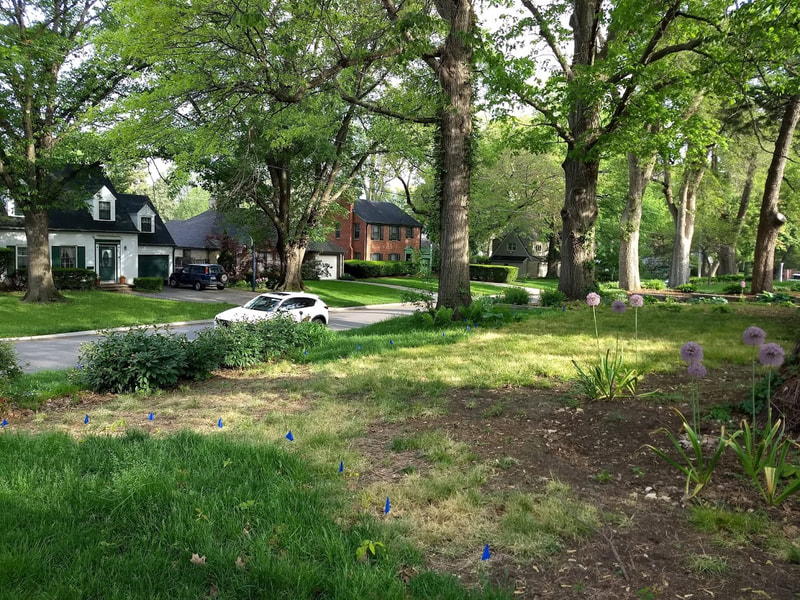
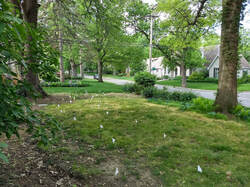
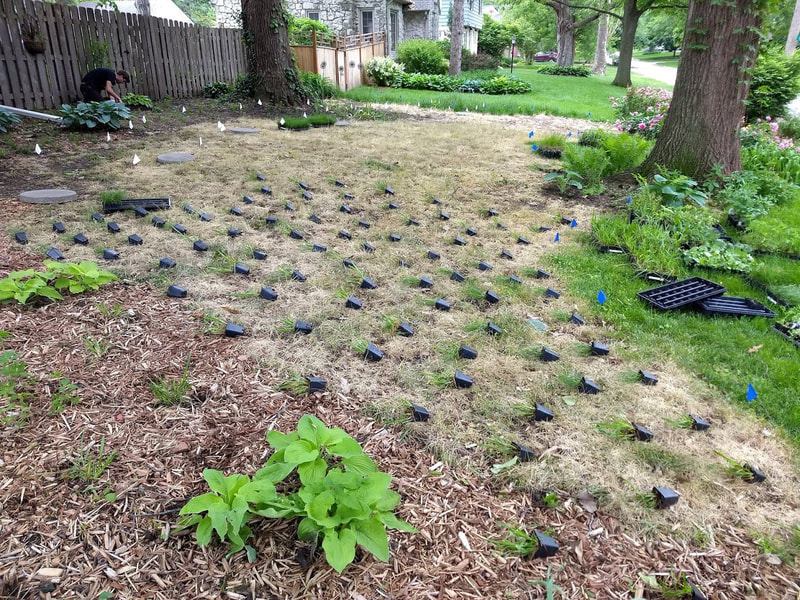
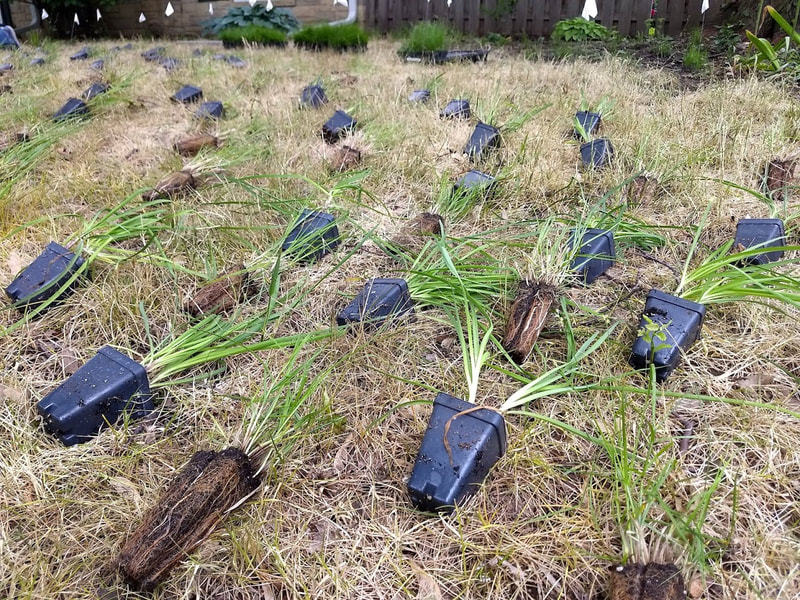
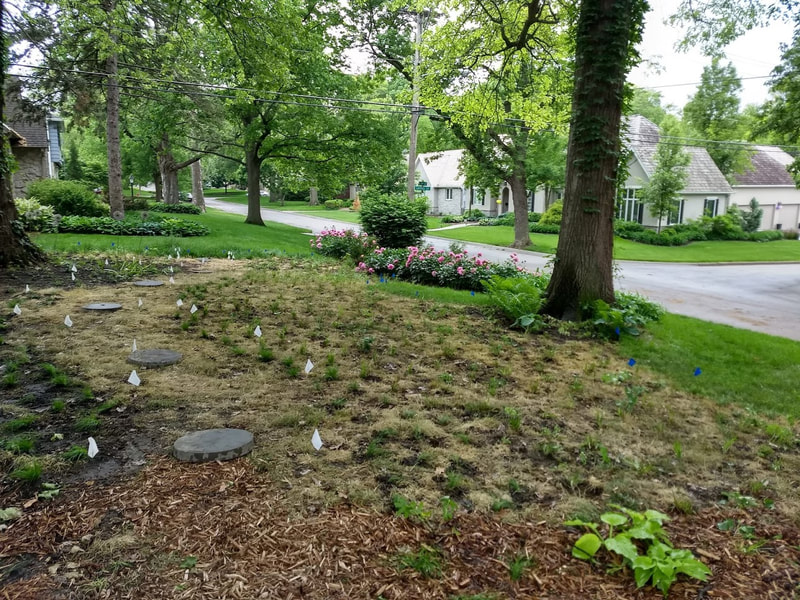
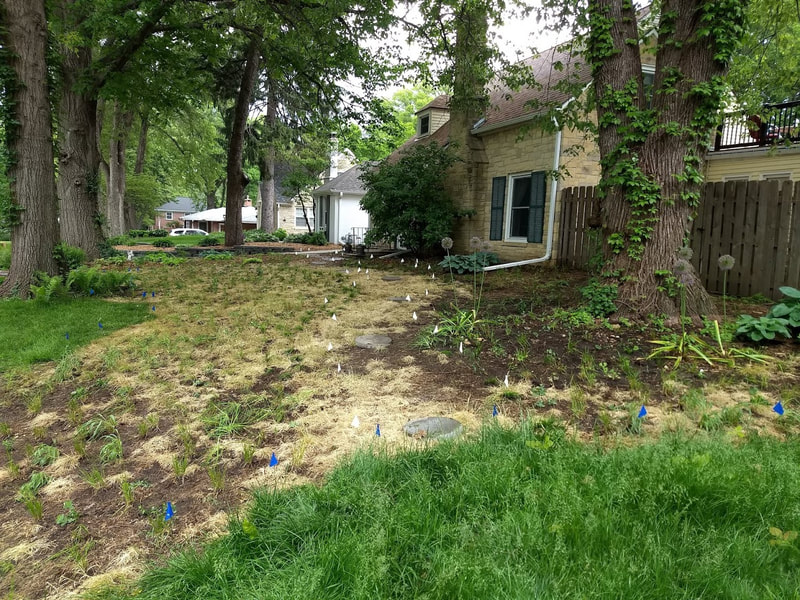
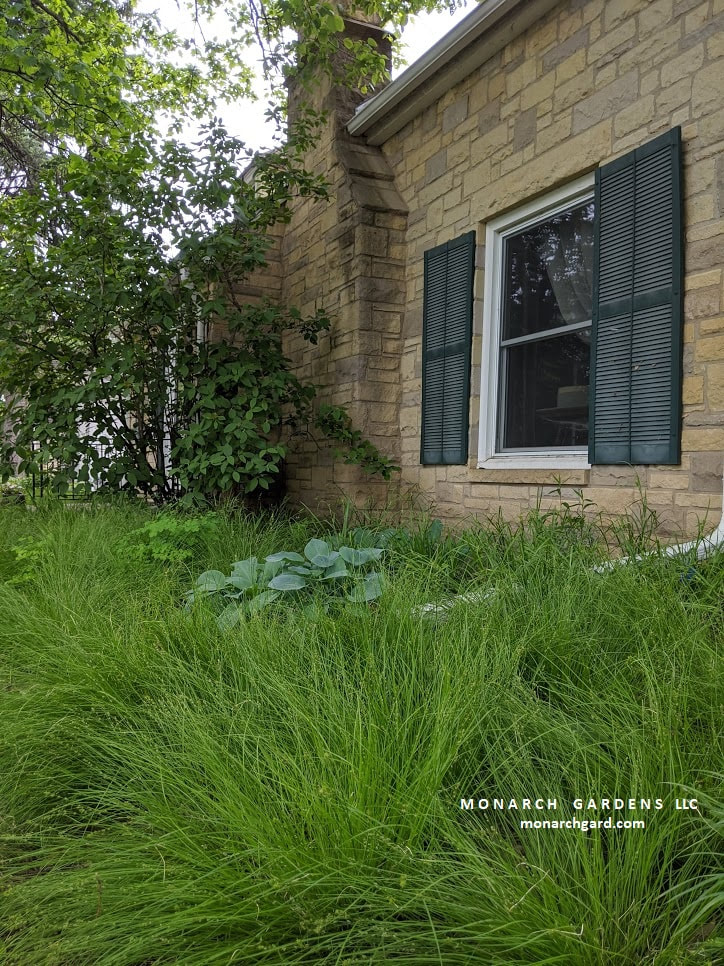
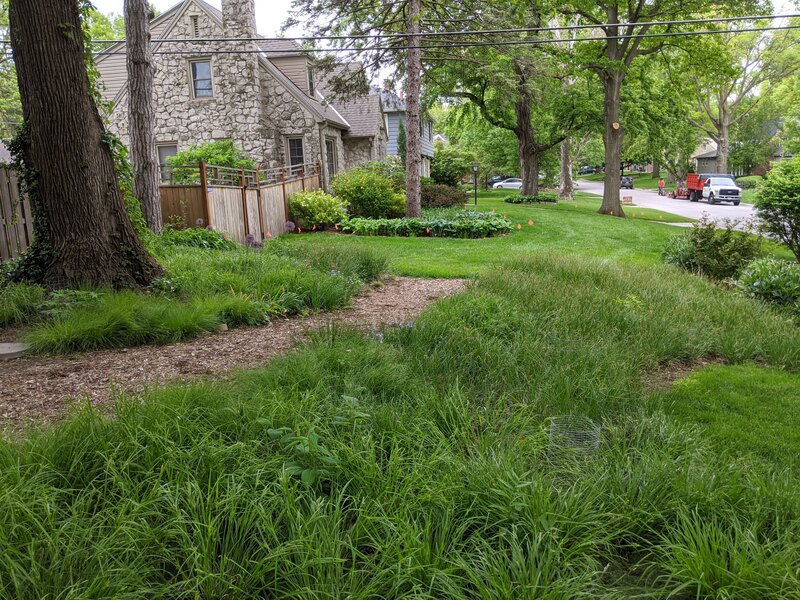
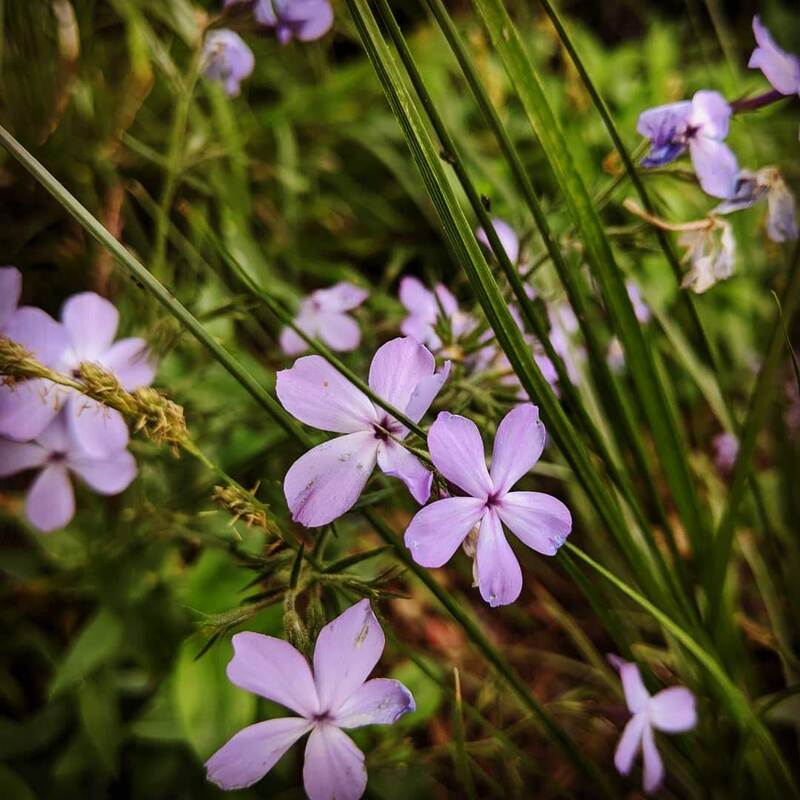

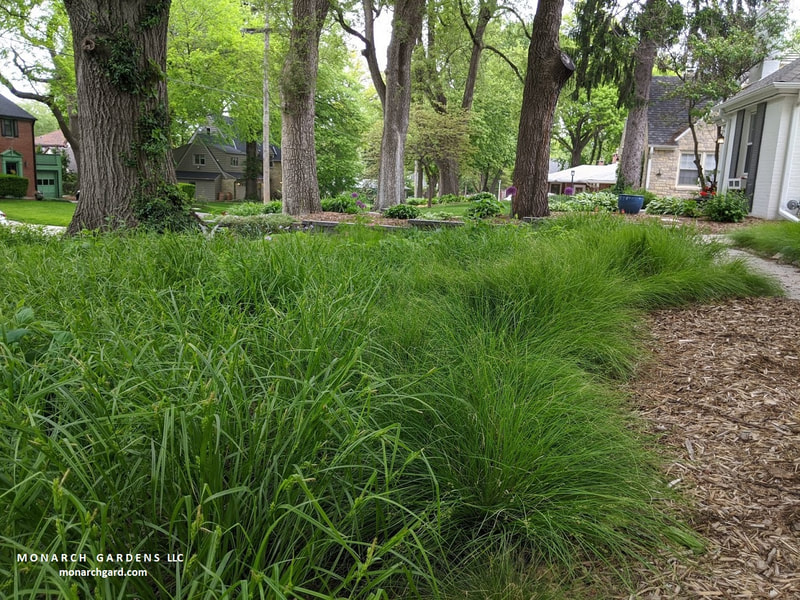
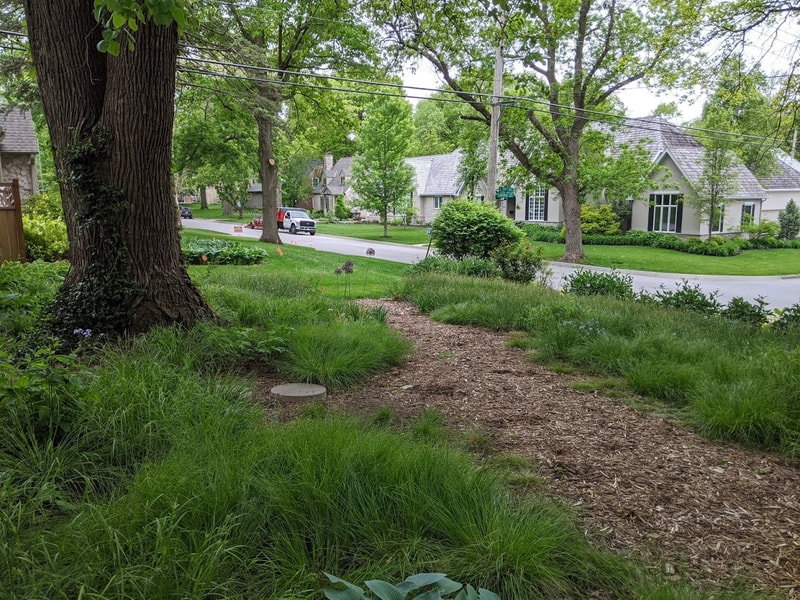

 RSS Feed
RSS Feed

